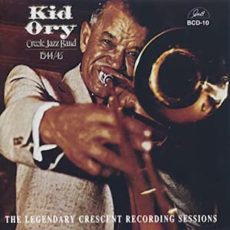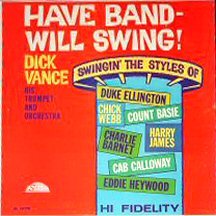
Daily Dose Of Jazz…
Alain Mion was born of French extraction on January 14, 1947 in Casablanca, Morocco but was raised in Paris, France.Influenced by Bobby Timmons, Ray Charles and Les McCann, his style varies between jazz, soul jazz and funky music. By the time he was 19 he formed his own trio and performed at the Blue Note. This subsequently led to him gigging at various festivals with Hank Mobley and Philly Joe Jones.
1974 Alain created the jazz funk group Cortex and recorded a dozen albums before embarking upon a career under his own name in 1982, recording to date eleven albums, such as Pheno-Men, Alain Mion in New York recorded with David Binney and Marc Johnson, and Some Soul Food recorded in Stockholm, Sweden with Patrik Boman and Ronnie Gardiner.
In 2008, he emerged with a new group, Alain Mion FunKey Combo with drums, bass and a saxophone section consisting of Italian and French musicians. He reinvented his new group Alain Mion & The New Cortex with the singer Adeline de Lépinay reprising the role originally performed by Mireille Dalbray on the Troupeau Bleu album.
In the United States, Alain Mion and Cortex’s songs have been sampled by several hip-hop artists including but not limited to Madlib, Fat Joe, DJ Day, MF DOOM, Wiz Khalifa, Curren$y, Mellowhype, Tyler The Creator, Rick Ross, and Lupe Fiasco.
Pianist, composer, arranger, and vocalist Alain Mion continues his exploration of the jazz idiom.

More Posts: arranger,bandleader,composer,history,instrumental,jazz,music,piano,vocal

Daily Dose Of Jazz…
Bud Scott was born Arthur Budd Scott on January 11, 1890 in New Orleans, Louisiana. He played guitar and violin as a child and performed professionally from an early age. His first job was with New Orleans dance band leader John Robichaux in 1904 and as a teenager he played with Buddy Bolden. In 1911 he was playing guitar with Freddie Keppard’s Olympia Orchestra. In 1912 he left New Orleans with a large travelling show.
As a violinist he performed with James Reese Europe’s Clef Club Orchestra at a historic 1912 concert at Carnegie Hall, and the following year worked with Europe’s ensemble on the first jazz recordings on the Victor label.He would go on to play on a number of Victor Talking Machine Company ragtime recordings with James Reese Europe’s Society Orchestra in 1913.
A graduate of the Peabody School of Music, he was a notable rhythm guitarist in Chicago, Illinois’s Jazz Age nightclubs of the 1920s. Moving there in 1923, he became a member of King Oliver’s Creole Jazz Band, originating the now traditional shout, Oh, play that thing!, on Oliver’s recording of Dippermouth Blues. He also worked with Johnny Dodds and Jimmy Blythe, Erskine Tate, Jelly Roll Morton’s Red Hot Peppers and Richard M. Jones’ Jazz Wizards.
Scott was the first person to use a guitar in a modern dance orchestra, in Dave Peyton’s group accompanying Ethel Waters at Chicago’s Cafe de Paris. After performing and recording with Jimmie Noone’s Apex Club Orchestra in 1928 he moved to California. Making a living as a professional musician through the 1930s, when traditional jazz was eclipsed by big-band swing music, he formed his own trio. In 1944 Scott joined an all-star combination that evolved into Kid Ory’s Creole Jazz Band. This was an important force in reviving interest in New Orleans-style jazz in the 1940s, and he wrote the majority of the band’s arrangements.
In 1944 Bud joined an all-star traditional New Orleans band that was a leader of the West Coast revival, put together for the CBS Radio series The Orson Welles Almanac. He arranged most of the songs for Kid Ory’s band, of which he was a part. His talent for arranging earned him the title of The Master.
A stroke in 1948 forced his retireent from music. Guitarist, banjoist, violinist and vocalist Bud Scott, whose obituary ran on the front page of the Los Angeles Sentinel, transitioned in Los Angeles, California on July 2, 1949, aged 59.

More Posts: arranger,banjo,buitar,history,instrumental,jazz,music,violin,vocal

Daily Dose Of Jazz…
John “Jack” Purvis was born in Kokomo, Indiana on December 11, 1906 and became uncontrollable after his mother’s death in 1912. This resulted in being sent to a reform school, but while there, he discovered that he had an uncanny musical ability, and soon became proficient enough to play both the trombone and trumpet professionally. Leaving the reformatory he continued his high school education, while playing paying gigs on the side. One of the earliest jobs he had as a musician was with a band led by the Royal Canadian Mounted Police. Not long afterward, he worked with the dance band of Hal Denman.
After high school he worked in Indiana for a time then went to Lexington, Kentucky where he played with the Original Kentucky NightHawks. Around this time he learned to fly planes. In 1926 he was with Bud Rice and toured New England. The remainder of 1926 and the beginning of 1927 was with Whitey Kaufman’s Original Pennsylvanians. For a short time he played trumpet with Arnold Johnson’s orchestra, and by July 1928 he traveled to France with George Carhart’s band. A brush with the law forced him to return to New York City in 1928.
From 1929 on he joined Hal Kemp’s band and recorded with Kemp, Smith Ballew, Ted Wallace, Rube Bloom, the California Ramblers, and Roy Wilson’s Georgia Crackers. He led a couple of racially mixed recording sessions including the likes of J.C. Higginbotham, and Adrian Rollini. He worked with the Dorsey Brothers, Fletcher Henderson, Fred Waring, Charlie Barnet. the New Orleans Symphony Orchestra.
Moving to Los Angeles, California he found success with radio broadcasting, worked with the George Stoll Orchestra as a writer, and arranged for Warner Bros. Studios. He composed Legends of Haiti for a one hundred and ten piece orchestra.
Arrested in Texas in 1937, he spent a total of nine years in prison for robbery and breaking parole. After his final release he worked at non-musical careers which included working as a chef, aviator, carpenter, radio repairman and a mercenary. One of the earliest trumpeters to incorporate the innovations pioneered by Louis Armstrong in the late 1920s.
His mental stability was always in question, having attempted suicide on several occasions. Trumpeter Jack Purvis, who played trombone, harp, andcomposed Dismal Dan and Down Georgia Way, passed away on March 30, 1962.
More Posts: arranger,harp,history,instrumental,jazz,music,trombone,trumpet

Daily Dose Of Jazz…
Dick Vance was born on November 28, 1915 in Mayfield, Kentucky, and raised in Cleveland, Ohio. He learned violin before concentrating on trumpet and by 1932 was playing with J. Frank Terry before joining Lil Armstrong’s band in 1934.
He moved to New York City and played with Willie Bryant, Kaiser Marshall, and Fletcher Henderson between 1936 to 1938. In Henderson’s band he was lead trumpeter and occasionally sang. By 1939 he joined Chick Webb’s orchestra, remaining in the group when Ella Fitzgerald took over leadership. His next move had him becoming the staff arranger for Glen Grey’s band and, in 1942, joined the Lucky Millinder Orchestra.
From 1944–45 he worked with Charlie Barnet, Don Redman, Eddie Heywood and Ben Webster. From 1944 to 1947 he studied at Juilliard, and moonlighted as a pit orchestra musician and an arranger for Harry James, Cab Calloway, Earl Hines and Duke Ellington. During this time Dick played on notable Broadway productions including Pal Joey, Beggar’s Holiday, and in the off-stage band for Streetcar Named Desire.
In 1950, Vance reunited with Fletcher Henderson, playing in his New York sextet. 1951 to 1952 saw him as a member of Duke Ellington’s trumpet section where he arranged most of the items for the album Ellington ‘55. In 1958 he co-composed Jazz Festival Suite with Ellington for performance at the Newport Jazz Festival. He led Sonny Stitt’s trumpet section on the 1962 album Sonny Stitt & The Top Brass. He toured abroad with his own band in 1969, which later appeared in the film L’aventure du jazz.
He toured with Redman in 1953 and was a regular at the Savoy Ballroom throughout the 1950s. He released two albums in the 1960s and toured with Eddie Barefield in 1969. He appears briefly in episode 9 of the music documentary series All You Need Is Love: The Story of Popular Music. In 1979, he composed for the documentary film No Maps On My Taps, starring Lionel Hampton and Howard Sims.
Trumpeter, vocalist, composer and arranger Dick Vance passed away on July 31, 1985 in New York City at the age of 69.
More Posts: arranger,bandleader,composer,history,instrumental,jazz,music,trumpet,vocal

Daily Dose Of Jazz…
Tommy Stewart was born November 19, 1939 in Gadsden, Alabama. He attended Industrial High in Birmingham, Alabama where John T. “Fess” Whatley trained him along with Erskine Hawkins, Dud Bascomb, Paul Bascomb, and Sun Ra. Alvin “Stumpy” Robinson, the band director at Washington Jr High School, was also influential in his development.
Enrolling at Alabama State College and having no way to pay tuition, the problem solved itself when he joined the Bama State Collegians, a dance band that made enough money to fund Stewart’s way through four years of college. He attended Alabama State University, where he directed the Bama State Collegians. Later, he studied jazz arranging at the Eastman School of Music and studied arranging under John Duncan, a classical composer and teacher at Alabama State University.
As an educator he began his teaching career at Fayette High School in St. Clair County Alabama, 1961 to 1963. Moving to Atlanta, Georgia in 1969 he taught in Fayetteville, Georgia, worked for Morris Brown College doing band arrangements and taught jazz and arranged for the Morehouse College band. He also taught band classes at West End High School in Birmingham, Alabama from, and taught A Survey of Popular Music at Georgia State University.
During the 1970s, he worked with Gladys Knight & the Pips, The Tams, Johnnie Taylor, Jackie Moore, King Floyd, Z. Z. Hill, and The Stylistics. He toured as musical director for Johnnie Taylor and for Ted Taylor and went on to record disco in the Seventies with Final Approach, Cream De CoCo, Tamiko Jones, Moses Davis, and his own album.
In 1990, he co-founded the African American Philharmonic Orchestra with founder and conductor John Peek. He moved from Atlanta to Birmingham in 1992. He was a member of the Magic City Jazz Orchestra, Cleveland Eaton, the Alabama All-Stars, the Alabama Jazz Hall of Fame All-Stars, and Ray Reach and Friends, continues to be involved in music. In 1988, he was inducted into the Alabama Jazz Hall of Fame. At 81, trumpeter, arranger, composer, and record producer Tommy Stewart remains involved in the music industry.
More Posts: arranger,bandleader,history,instrumental,jazz,music,record producer,trumpet



